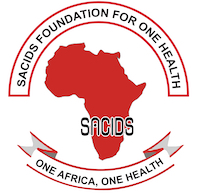Authors: Folorunso O. Fasina 1,*,Henry Kissinga 2,Fredy Mlowe 3,Samora Mshang’a 4,Benedict Matogo 5,Abnery Mrema 6,Adam Mhagama 7,Selemani Makungu 8,Niwael Mtui-Malamsha 1,Raphael Sallu 1,Gerald Misinzo 9,Bishop Magidanga 10,Fredrick Kivaria 11,Charles Bebay 11,Solomon Nong’ona 12,Fred Kafeero 1 andHezron Nonga 8
Abstract
African swine fever remains an important pig disease globally in view of its rapid spread, economic impacts and food implications, with no option of vaccination or treatment. The Southern Highlands zone of Tanzania, an important pig-producing hub in East Africa, is endemic with African swine fever (ASF). From approximately the year 2010, the recurrence of outbreaks has been observed and it has now become a predictable pattern. We conducted exploratory participatory epidemiology and participatory disease surveillance in the Southern Highlands to understand the pig sector and the drivers and facilitators of infections, risk factors and dynamics of ASF in this important pig-producing area. Pigs continue to play a major role in rural livelihoods in the Southern Highlands and pork is a major animal protein source. Outbreaks of diseases, particularly ASF, have continued to militate against the scaling up of pig operations in the Southern Highlands. Intra- and inter-district and trans-border transnational outbreaks of ASF, the most common disease in the Southern Highlands, continue to occur. Trade and marketing systems, management systems, and lack of biosecurity, as well as anthropogenic (human) issues, animals and fomites, were identified as risk factors and facilitators of ASF infection. Changes in human behavior and communication in trade and marketing systems in the value chain, biosecurity and pig management practices are warranted. Relevant training must be implemented alongside the launch of the national ASF control strategy for Tanzania, which already established a roadmap for combating ASF in Tanzania. The high-risk points (slaughter slabs, border areas, and farms with poor biosecurity) and high-risk period (November–March) along the pig value chain must be targeted as critical control points for interventions in order to reduce the burden of infection.






